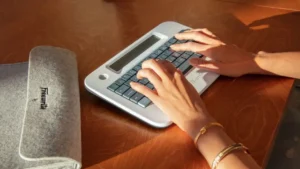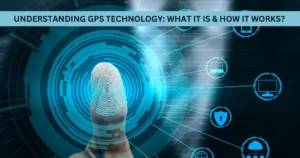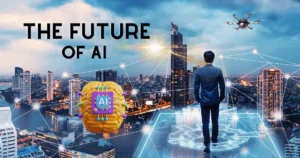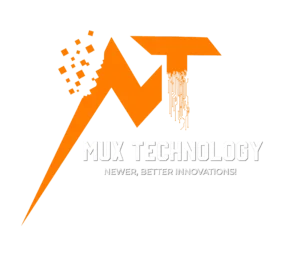Today’s fast-paced world demands efficiency and precision. Therefore, GPS technology is essential to modern navigation. GPS has evolved into a vital tool that reliably and accurately leads us. This technology has been incorporated into many aspects of our daily lives and has moved smoothly into civilian use. The basis of its operation is a network of 24 satellites that orbit the Earth and continuously send out signals that allow GPS receivers, which can be anything from specialized navigation devices to smartphones, to locate the precise geographic coordinates of objects.
These receivers determine their position by triangulating signals from numerous satellites using a method called trilateration, which guarantees accurate location determination almost anywhere on Earth. Whether we’re traveling through busy streets or hiking through isolated areas. This article explores the functions, uses, and potential developments of this technology to provide insight into how it affects our daily life.
Understanding GPS Full Concept
GPS technology works through delivering precise signals from a network of satellites orbiting the Earth, which allows GPS receivers to pinpoint any place on the planet. GPS was first created for military use before being made available for civilian usage, transforming a number of sectors and daily tasks. Beyond emergency response and transportation, GPS is essential for industries like agriculture, where it enables precision farming methods that maximize crop yields and lessen environmental impact by applying fertilizer and pesticides only where needed. GPS is used by outdoor enthusiasts for activities such as hiking and geocaching, where the ability to track locations with pinpoint accuracy increases both safety and adventure.
How Does GPS Technology Works?
GPS is primarily dependent on a network of 24 satellites that continuously send signals back to Earth. The position of the satellite and the precise moment the signal was sent are both disclosed in these signals. Through a technique known as trilateration, a GPS receiver may determine its exact location by collecting signals from numerous satellites.
Components of GPS
- Satellites: These orbit the Earth and continuously broadcast signals.
- Receiver: Devices ranging from smartphones to specialized GPS units receive and interpret satellite signals.
- Control Segment: Ground stations monitor and manage the satellite constellation, ensuring accurate signal transmission.
Applications of GPS Technology
With the widespread use of GPS, efficiency, safety, and convenience have all increased.
Navigation and Mapping
One of the most familiar uses of GPS is in navigation systems. Whether integrated into car dashboards or smartphone apps, GPS provides real-time directions, traffic updates, and alternative routes, making travel smoother and more efficient.
Aviation and Maritime Navigation
In aviation, GPS guides aircraft during flight, ensuring precise navigation and safe landings. Similarly, maritime vessels rely on GPS for accurate positioning at sea, aiding in navigation and collision avoidance.
Emergency Services and Public Safety
Emergency services such as ambulance fleets and fire departments use GPS to dispatch the nearest responders quickly. GPS-enabled devices also assist in locating individuals in distress, improving response times and potentially saving lives.
Agriculture and Farming
In agriculture, GPS technology enhances precision farming techniques. Farmers use GPS data to optimize planting patterns, apply fertilizers and pesticides more efficiently, and monitor crop health, thereby increasing yields while minimizing environmental impact.
Geocaching and Recreation
For outdoor enthusiasts, GPS has opened up new realms of exploration through activities like geocaching, where participants use GPS coordinates to locate hidden treasures. GPS-enabled devices also track hiking routes and provide safety features in remote areas.
Future Trends in GPS Technology
As technology continues to advance, the future of GPS holds exciting possibilities. Looking ahead, the future of GPS promises further advancements and integration with emerging technologies like augmented reality (AR) and the Internet of Things (IoT). These developments are poised to enhance user experiences by offering personalized and context-aware services based on real-time location data.
Enhanced Accuracy and Reliability
Ongoing developments aim to improve GPS accuracy even further, particularly in urban environments where signal obstructions can pose challenges. Enhanced reliability ensures uninterrupted navigation and connectivity.
Integration with IoT and Smart Cities
GPS technology will play a crucial role in the development of smart cities and the Internet of Things (IoT). By integrating GPS with other technologies, cities can optimize traffic flow, manage infrastructure, and improve overall livability.
Augmented Reality (AR) and Location-Based Services
The integration of GPS with augmented reality (AR) will enable immersive experiences that overlay digital information onto the physical world. Location-based services will become more personalized, offering tailored recommendations based on real-time GPS data.
Environmental Monitoring and Conservation
GPS-enabled sensors are increasingly used for environmental monitoring and conservation efforts. By tracking wildlife movements, monitoring deforestation, or mapping sensitive ecosystems, GPS aids in preserving natural habitats and biodiversity.
Top Benefits Of Using Global Positioning System
GPS offers a wide range of benefits across various sectors and everyday activities, enhancing efficiency, safety, and convenience in numerous ways.
Accurate Navigation
GPS provides precise location information, enabling accurate navigation for vehicles, pedestrians, and aircraft. It ensures that users can reach their destinations efficiently, even in unfamiliar or remote locations.
Improved Efficiency
In transportation, GPS optimizes route planning and vehicle dispatching. It helps reduce travel time, fuel consumption, and emissions by guiding drivers along the most efficient paths and providing real-time traffic updates.
Enhanced Safety and Security
GPS enhances safety by enabling emergency services to locate and respond to incidents swiftly. It aids in tracking vehicles and assets, reducing the risk of theft and improving recovery rates in case of loss.
Precision Agriculture
GPS technology revolutionizes agriculture through precision farming techniques. Farmers use GPS data to optimize planting patterns, monitor crop health, and precisely apply fertilizers and pesticides, leading to higher yields and reduced environmental impact.
Outdoor Recreation and Adventure
For outdoor enthusiasts, GPS devices provide accurate trail mapping, location tracking, and navigation in remote areas. It enhances safety by ensuring hikers and adventurers can find their way back to safety even in challenging terrain or adverse weather conditions.
Efficient Fleet Management
Businesses benefit from GPS for fleet management, enabling real-time monitoring of vehicle locations, routes, and performance metrics. This leads to improved logistics, better asset utilization, and cost savings in operations.
Geolocation-based Services
GPS powers a variety of location-based services on smartphones and other devices. These services include local business searches, personalized recommendations, and location-aware advertisements, enhancing user experiences and convenience.
Disaster Management and Humanitarian Aid
During disasters or humanitarian crises, GPS facilitates coordination efforts by providing accurate location data for rescue and relief operations. It aids in mapping affected areas, delivering supplies, and assisting displaced populations.
Scientific Research and Exploration
In scientific research and exploration, GPS technology supports studies in geology, ecology, climate science, and more. Researchers use GPS to track movements of wildlife, monitor environmental changes, and conduct precise geological surveys.
Integration with Emerging Technologies
GPS integrates with emerging technologies such as augmented reality (AR) and the Internet of Things (IoT), enabling innovative applications like AR navigation overlays and context-aware smart devices. This opens up new possibilities for personalized and interactive experiences.
Summing Up!
In conclusion, GPS technology has evolved from a military innovation to a ubiquitous tool that shapes our daily lives in profound ways. From precise navigation and emergency services to agriculture and recreation, GPS enhances efficiency, safety, and convenience across diverse sectors. As we look to the future, ongoing advancements promise to further expand the capabilities of GPS, ushering in new applications and benefits for society as a whole. Whether you’re navigating city streets or charting new adventures in the great outdoors, GPS technology remains your steadfast guide, ensuring you always know exactly where you are and where you’re headed.








